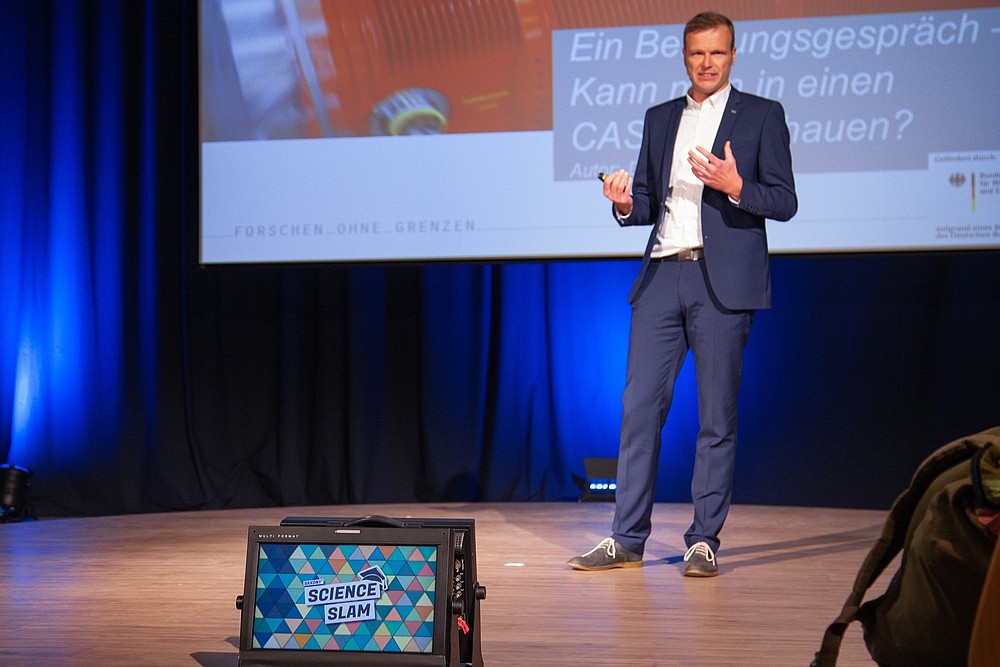Castor containers contain radioactive cargo. But what do you do with the dangerous contents? The search for a final storage site for the nuclear waste continues, but the containers are there and need to be monitored. This is precisely the problem facing the nuclear power plant in the tranquil town of Springfield. Homer Simpson tells Daniel Fiß, a member of staff at the Institute of Process Engineering, Process Automation and Measurement Technology at the HSZG, about his approach so far. Open the Castor, stir it, close it again and take the container out into nature. No wonder Homer's doctor just shakes his head. Fortunately, he has now moved to Zittau to look for better methods.
Concentrated science in 10 minutes, packed into exciting, vivid presentations - Daniel Fiß from the IPM faced this competition for the best "slam presentation". Together with five competitors, he competed for the trophy of the 1st Saxony5 Science Slam on October 25 in the television studio at Mittweida University of Applied Sciences. Colleagues from Zittau were also able to follow how the presentations were received by the audience live via the MDR Wissen Facebook page.
"Fundamental F&E work on methods for monitoring the condition of transport and storage casks for spent fuel elements and heat-generating high-level radioactive waste during extended interim storage"
(A cooperation project between the TU Dresden and the IPM of the HSZG)
What sounds like an unwieldy title is actually very convincing in terms of its content: How do you look into a Castor cask to find out what is going on inside during the interim storage of the fuel rods?
In addition to radiographic measurement methods that determine the radiation distribution in the Castor, X-rays using cosmic radiation and experiments that simulate the heat distribution in the container, the researchers have been able to report successes with two other methods.
Vibration analysis makes the Castor "dance", even if this can only be detected in the micrometer range. In the case of passive acoustic emission, Homer had to keep his ears open, because when a rod in the Castor bursts, the sound becomes measurable. The scientists from the IPM now want to repeat the experiments with a real Castor container and develop a concept for monitoring the radiating cargo in an interim storage facility in the medium term, and thus monitoring the fuel rods.
Local hero Prof. Kristan Schneider from Mittweida slammed his way to victory on Thursday evening. He presented his field of mathematical population genetics using the example of the mating behavior of great apes. The audience honored his presentation with rapturous applause. Homer Simpson's excursion to the HSZG was also well received and helped to present research on the socially controversial topic of nuclear waste.
All slams can be relived on the Saxony5 YouTube channel.
The complete event can be streamed on Facebook.
More information on the Saxony5 transfer network can be found here.


![]()
Text: Kristin Sprechert
Contact research project:
Institute of Process Engineering, Process Automation and Metrology
Prof. Dr.-Ing. Alexander Kratzsch
Phone: 03583 612-4282
E-mail: a.kratzsch(at)hszg.de
Contact Saxony5
TV 13 "Marketplace of ideas"
Kristin Sprechert, M.A.
Phone: 03583 612-4792
E-mail: kristin.sprechert(at)hszg.de


